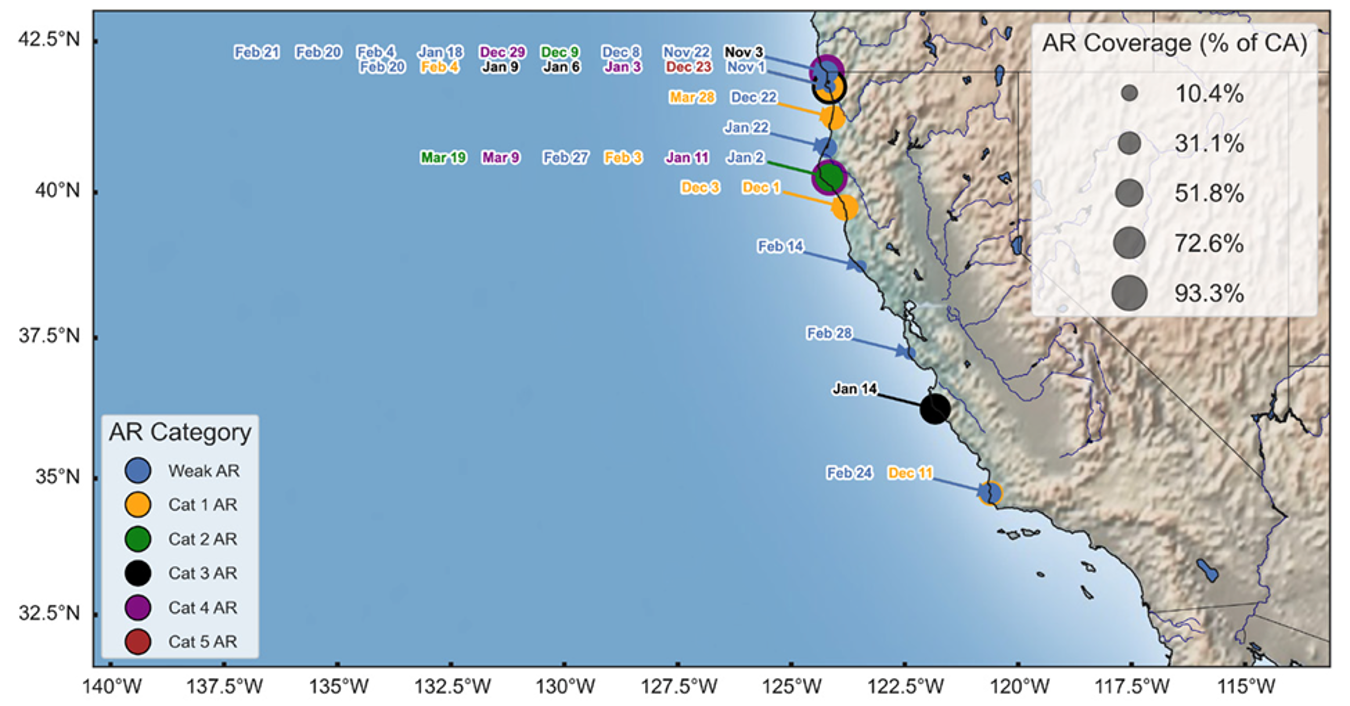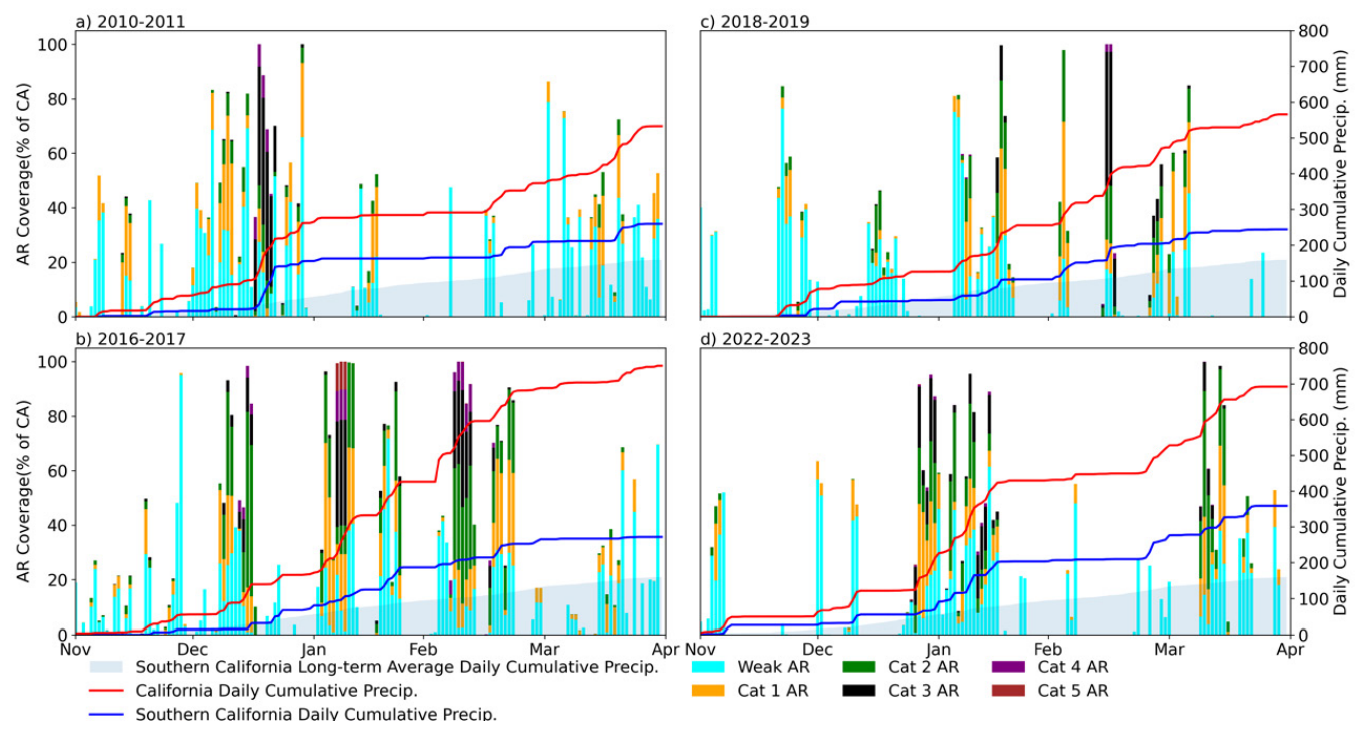CW3E Publication Notice
Beyond Expectations: Investigating Anomalous 2022-2023 Winter Weather Conditions and Water Resources Impacts in California
May 6, 2025
A new paper titled “Beyond Expectations: Investigating Anomalous 2022-2023 Winter Weather Conditions and Water Resources Impacts in California” authored by researchers from the Center for Hydrometeorology and Remote Sensing (CHRS) at UC Irvine, in collaboration with CW3E researcher Vesta Afzali Gorooh and Eric Shearer from the U.S. Army Engineer Research and Development Center, was recently published in the Bulletin of the American Meteorological Society (BAMS). The study, led by UC Irvine PhD Candidate Claudia Jimenez Arellano, comprehensively analyzes the anomalously wet and cold winter of 2022-2023 in California, characterized by substantial “weather whiplash.” Using data spanning 2002 to 2023, the research team examined key hydrometeorological variables such as precipitation, temperature, snowpack, reservoir storage, and atmospheric river (AR) events.
Findings revealed that wintertime precipitation for 2022-2023 reached the highest levels in over two decades in Southern California, driven primarily by 11 moderate to strong AR events (Figure 1). Interestingly, despite a lower number of intense AR events than in the 2016-2017 winter season (Figure 2), Southern California experienced higher cumulative precipitation in 2022-2023. This study highlights that approximately 360 mm of cumulative precipitation fell in Southern California, while about 700 mm accumulated statewide. Notably, a sequence of AR events in March, categorized as Category 4, 2, and 1 on March 9th, 19th, and 28th, significantly boosted statewide precipitation (Figure 3). The increase in precipitation during March considerably improved the state’s total water storage, reaching levels comparable to other notably wet years despite starting from significantly lower reservoir levels.
Overall, the anomalous winter conditions of 2022-2023 significantly alleviated drought across California, leaving 94% of the state drought-free by the conclusion of the water year. Lower-than-average temperatures in the subsequent spring and summer months also slowed snowpack melting, effectively mitigating flood risks despite record-high snow accumulation. The study emphasizes AR events’ critical role in California’s water resource management and the increasing importance of forecasting tools like Forecast-Informed Reservoir Operations (FIRO) in adapting to future climatic extremes.
Figure 1. AR landfall location, date, category, and coverage over California during winter 2022-2023. (Figure 5 in Arellano et al. 2025)
Figure 2. AR landfall location, date, category, and coverage over California during the winter of 2016-2017. (Figure 6 in Arellano et al. 2025)
Figure 3. Daily cumulative precipitation and number of AR events across all categories over California and Southern California during a) 2010-2011, b) 2016-2017, c) 2018-2019, and d) 2022-2023 winter. (Figure 4 in Arellano et al. 2025)
Arellano, C. J., Rouzegari, N., Dao, V., Zadeh, M. B., Shearer, E., Gorooh, V. A., Nguyen, P., Hsu, K., & Sorooshian, S. (2025). Beyond Expectations: Investigating Anomalous 2022-2023 Winter Weather Conditions and Water Resources Impacts in California. Bulletin of the American Meteorological Society (published online ahead of print 2025), BAMS-D-23-0336.1. https://doi.org/10.1175/BAMS-D-23-0336.1.



